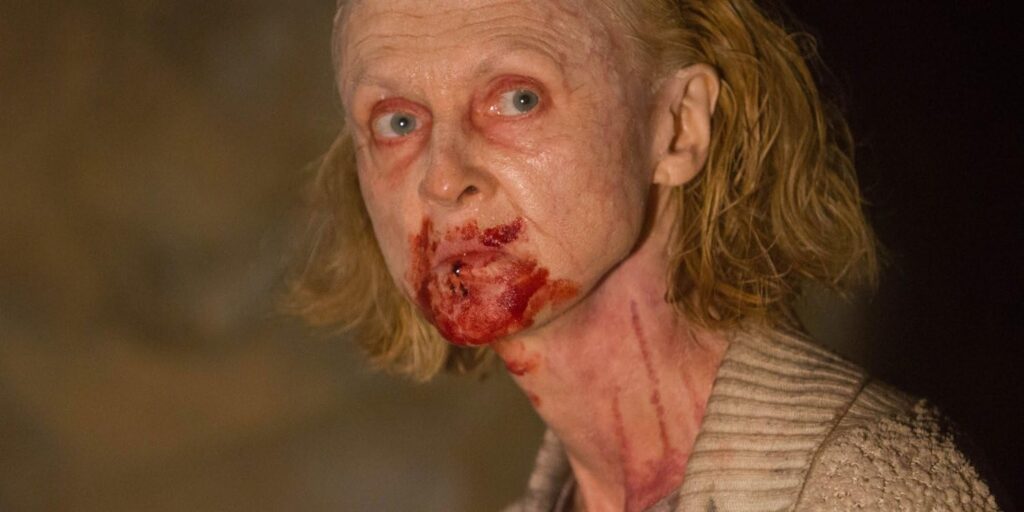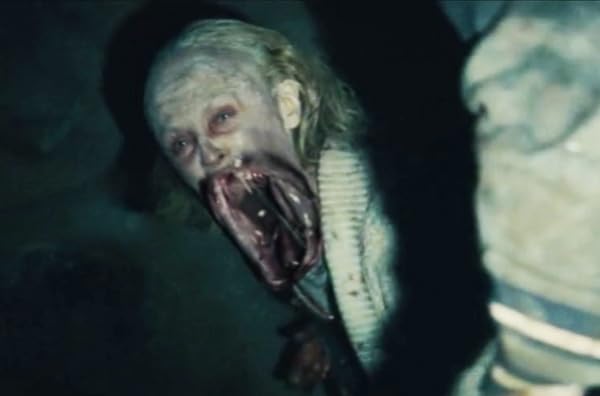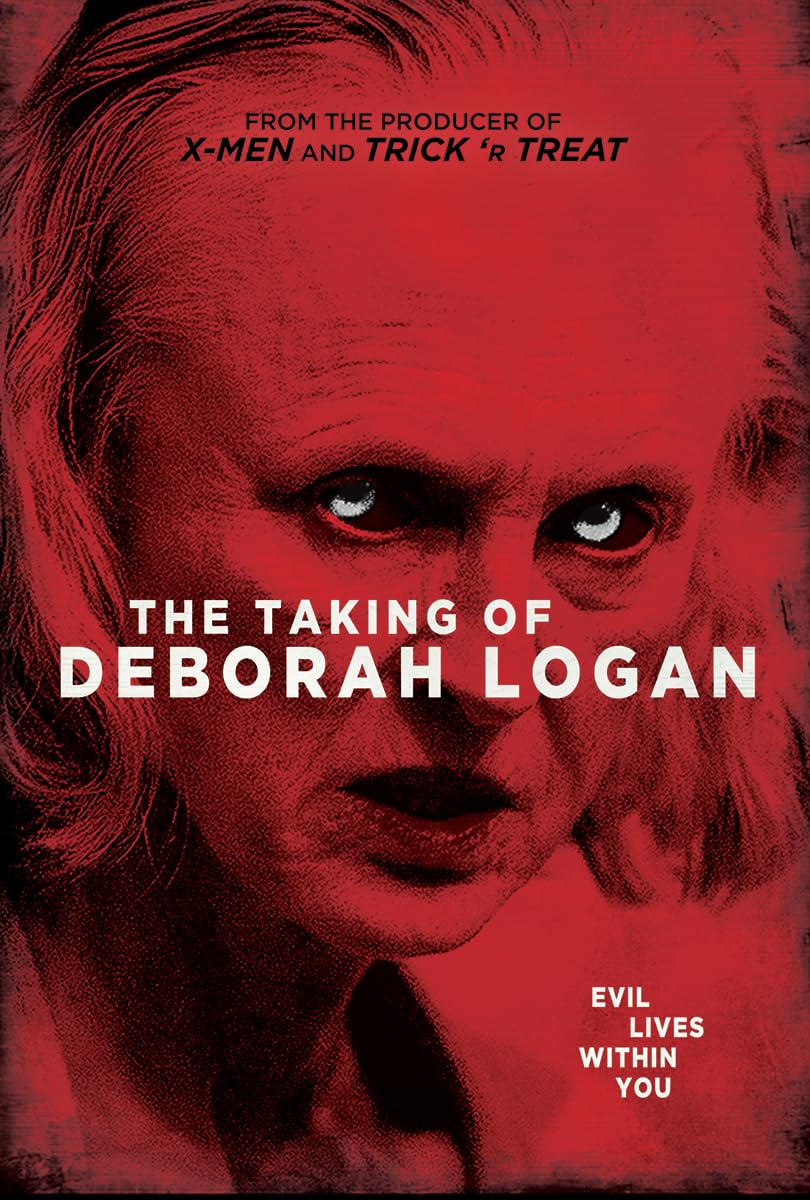The Taking of Deborah Logan is a 2014 American found footage supernatural horror film. An elderly woman battling Alzheimer’s disease agrees to let a film crew document her condition, but what they discover is something far more sinister going on.
The Taking of Deborah Logan: A Chilling Tale of Dementia and Demonic Possession
If you’re craving found-footage horror that creeps under your skin, The Taking of Deborah Logan (2014) delivers a slow-burn nightmare that morphs from a medical documentary into a full-on demonic freakshow. Directed by Adam Robitel, this indie gem stars Jill Larson as Deborah Logan, an Alzheimer’s patient whose descent into madness hides a sinister secret. Below, I’m spilling the whole twisted tale—complete with the creepiest scenes described in gory detail—for your blogging pleasure. Buckle up.
The Setup: A Documentary Gone Wrong
Mia Medina (Michelle Ang), a Ph.D. student, drags her film crew—cameraman Luis (Jeremy DeCarlos) and sound guy Gavin (Brett Gentile)—to rural Virginia to study Deborah Logan, an elderly woman grappling with Alzheimer’s. Deborah’s daughter, Sarah (Anne Ramsay), lets them in, desperate for cash to fend off foreclosure. At first, it’s all mundane: Deborah forgets names, misplaces keys, and snaps at Sarah with a sharp tongue. The crew’s shaky footage captures her frail figure wandering the house, her white hair a ghostly halo in dim light. But the normalcy doesn’t last.
The Turn: When Alzheimer’s Becomes Something Else
The cracks show fast. One night, the camera catches Deborah sleepwalking into the attic, her nightgown trailing like a shroud. She’s clawing at the walls, nails splintering, skin peeling back to reveal raw, bloody flesh—her face blank, eyes rolled white. It’s unnerving, like watching a corpse animate itself. Her doctor calls it Alzheimer’s aggression, but then there’s the rotary phone incident: Deborah hunched over it, muttering guttural French she never learned, her voice layered with something else. Gavin bolts after spotting a shadow in the footage—a tall, eyeless silhouette lurking behind Deborah that vanishes on rewind.
Sarah drops a bombshell: years ago, Deborah killed Henry Desjardins, a local pediatrician turned occultist, to save a young Sarah from being his fifth ritual sacrifice. Desjardins needed five girls’ souls for immortality, and now, it seems, he’s clawing his way back through Deborah’s crumbling mind.

The Escalation: Possession Unleashed
The horror explodes. Deborah’s skin turns scaly, like a snake shedding in reverse, glistening with a sickly sheen. One grainy night-vision shot shows her balanced on her toes for hours, arms dangling, head cocked at an impossible angle—her shadow twisting into something inhuman against the wall. Then there’s the kitchen scene: she’s caught on tape, jaw unhinged like a python’s, stretching wide enough to swallow a melon, teeth glinting as she stares straight into the lens. Mia’s scream crackles through the mic.
Desperate, Sarah and the crew unearth Desjardins’ rotting corpse from the backyard—his skull grinning through decayed flesh—and set it ablaze. It’s not enough. Deborah, now a puppet for Desjardins’ spirit, snatches Cara Minetti (Julianne Taylor), a frail cancer patient, from the hospital. Picture this: Deborah shambling through the ward, her hospital gown soaked in sweat, eyes black as tar, dragging Cara by her thin wrist as the girl’s IV rips free.
The Climax: A Mouthful of Terror
The showdown hits in an abandoned mine, Desjardins’ old killing ground. Deborah’s fully gone—her body a grotesque shell. In the film’s most stomach-churning moment, she pins Cara to the dirt, jaw stretching wider, wider, until it’s a gaping maw of wet, jagged teeth. She’s trying to swallow the girl’s head whole, Cara’s screams muffled as her face disappears into that cavernous throat, tendrils of spit dangling like webs. Sheriff Linda Tweed (Tonya Bludsworth) charges in, gun raised, only to get her neck snapped by Deborah’s claw-like hands, her body crumpling like a rag doll. Sarah and Mia torch Desjardins’ bones just in time—flames licking his skeleton as Deborah collapses, Cara coughing free, slick with slime.

The Aftermath: A Haunting Twist
Months later, a newsreel shows Deborah mute and catatonic, her face a sunken mask—too broken to face trial for the sheriff’s death. Cara, though? Her cancer’s vanished. At her 10th birthday party, she turns to the camera, her grin sharp and wrong, eyes glinting with something ancient. Desjardins isn’t dead—he’s in her, waiting.
Why It Works: Themes and Tones
The Taking of Deborah Logan thrives on its bait-and-switch: Alzheimer’s as a mask for possession. Larson’s Deborah is a revelation—fragile one minute, a drooling, reptilian terror the next. Ramsay’s Sarah grounds it with raw grief. The found-footage style, all shaky zooms and static glitches, makes every scare feel too close. It’s messy, uneven at times, but those visuals—like Deborah’s jaw splitting open or her scaly fingers raking the air—burn into your brain.
Final Thoughts: Should You Watch?
This isn’t cookie-cutter horror. It’s a slow drip of dread that erupts into visceral chaos, perfect for fans of The Babadook or Hereditary. Stream it if you dare, and tell me: did that jaw scene haunt your dreams? Hit the comments!
